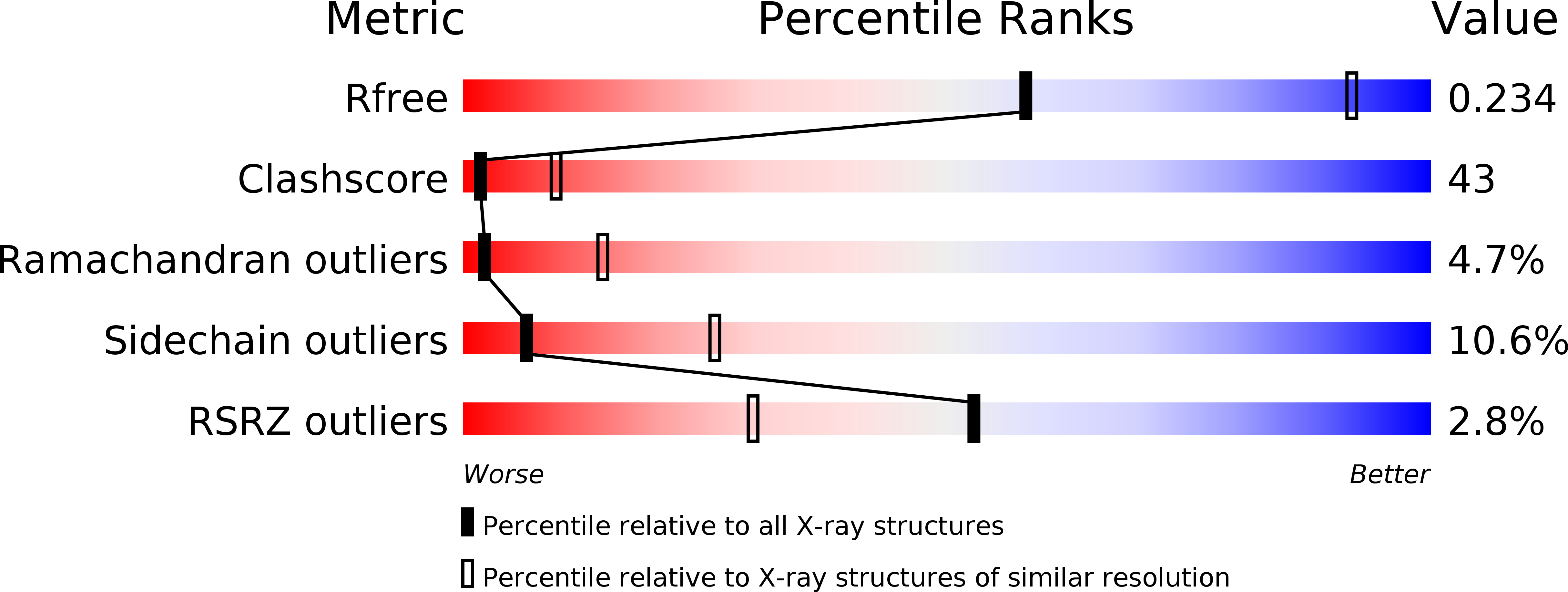Tel2 structure and function in the Hsp90-dependent maturation of mTOR and ATR complexes.
Takai, H., Xie, Y., de Lange, T., Pavletich, N.P.(2010) Genes Dev 24: 2019-2030
- PubMed: 20801936
- DOI: https://doi.org/10.1101/gad.1956410
- Primary Citation of Related Structures:
3O4Z - PubMed Abstract:
We reported previously that the stability of all mammalian phosphatidylinositol 3-kinase-related protein kinases (PIKKs) depends on their interaction with Tel2, the ortholog of yeast Tel2 and Caenorhabditis elegans Clk-2. Here we provide evidence that Tel2 acts with Hsp90 in the maturation of PIKK complexes. Quantitative immunoblotting showed that the abundance of Tel2 is low compared with the PIKKs, and Tel2 preferentially bound newly synthesized ATM, ATR, mTOR, and DNA-PKcs. Tel2 complexes contained, in addition to Tti1-Tti2, the Hsp90 chaperone, and inhibition of Hsp90 interfered with the interaction of Tel2 with the PIKKs. Analysis of in vivo labeled nascent protein complexes showed that Tel2 and Hsp90 mediate the formation of the mTOR TORC1 and TORC2 complexes and the association of ATR with ATRIP. The structure of yeast Tel2, reported here, shows that Tel2 consists of HEAT-like helical repeats that assemble into two separate α-solenoids. Through mutagenesis, we identify a surface patch of conserved residues involved in binding to the Tti1-Tti2 complex in vitro. In vivo, mutation of this conserved patch affects cell growth, levels of PIKKs, and ATM/ATR-mediated checkpoint signaling, highlighting the importance of Tti1-Tti2 binding to the function of Tel2. Taken together, our data suggest that the Tel2-Tti1-Tti2 complex is a PIKK-specific cochaperone for Hsp90.
Organizational Affiliation:
Laboratory for Cell Biology and Genetics, The Rockefeller University, New York, New York 10065, USA.














